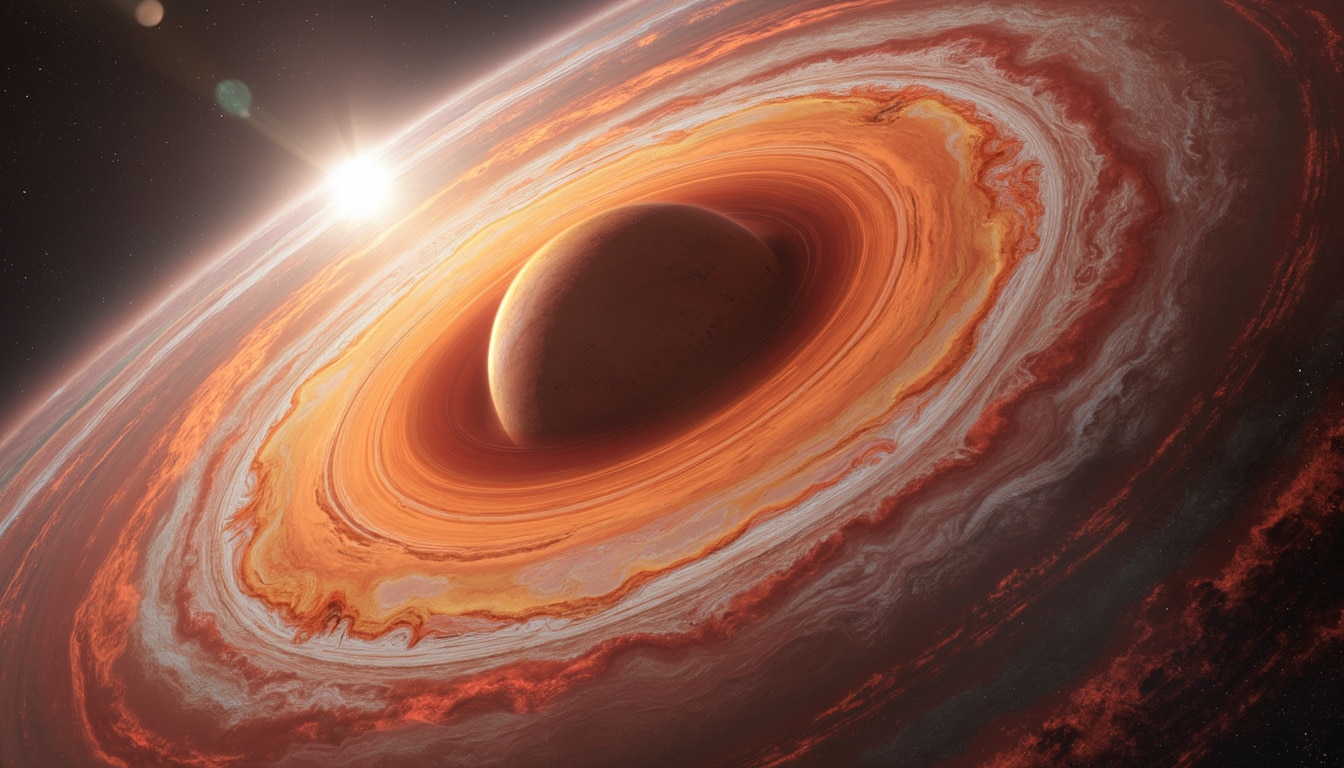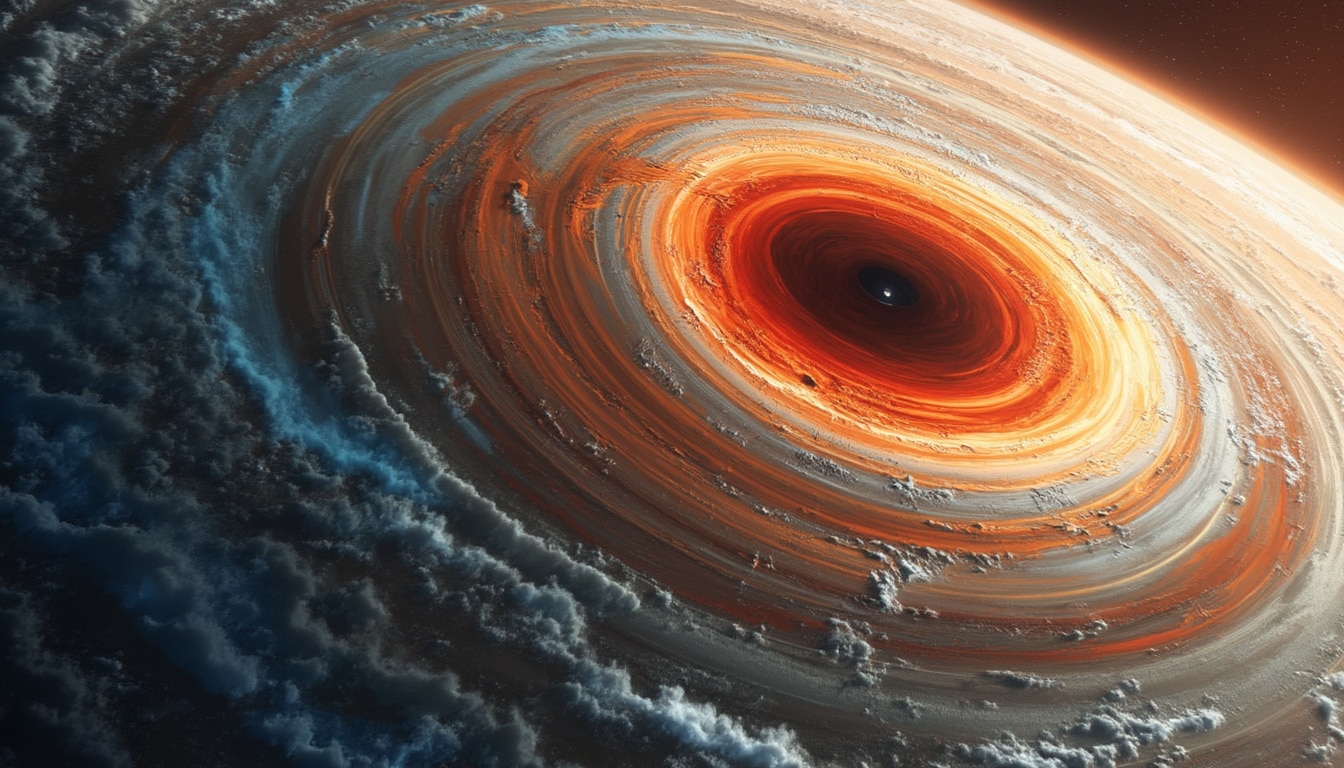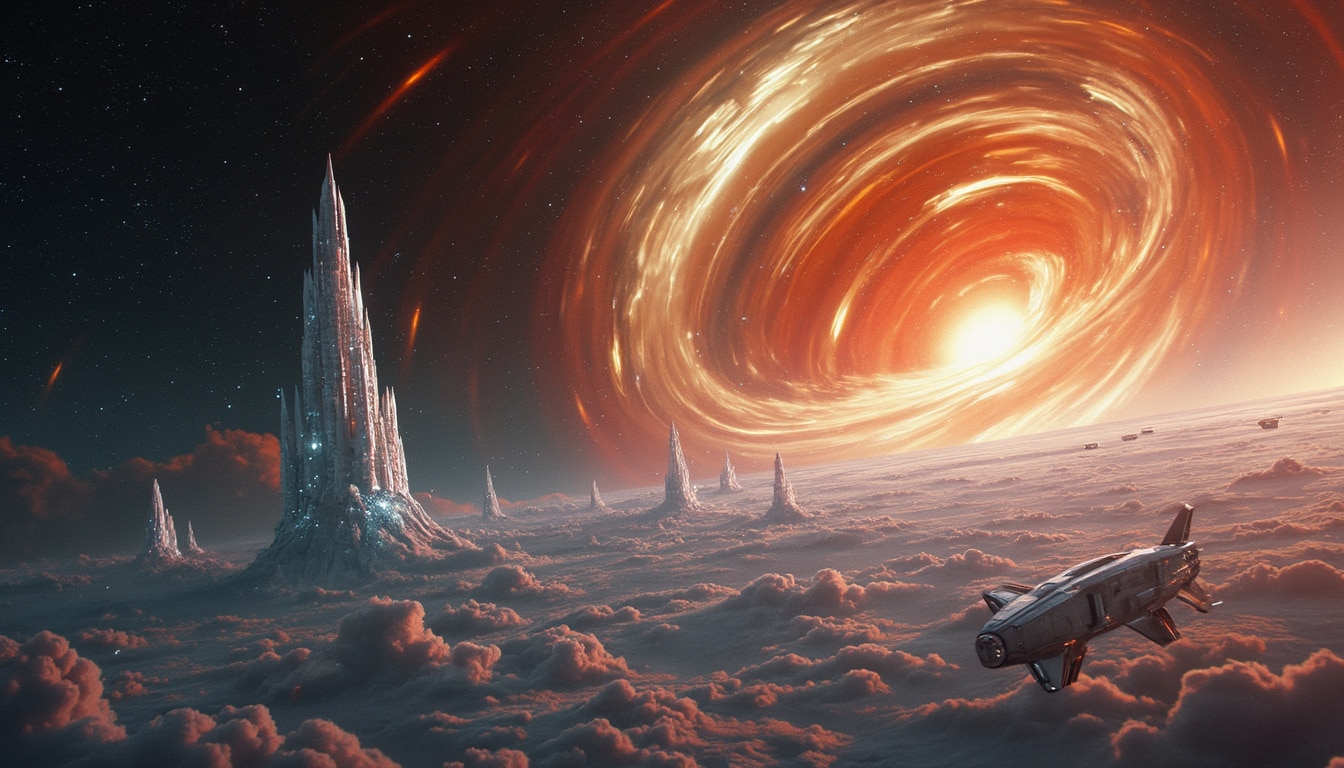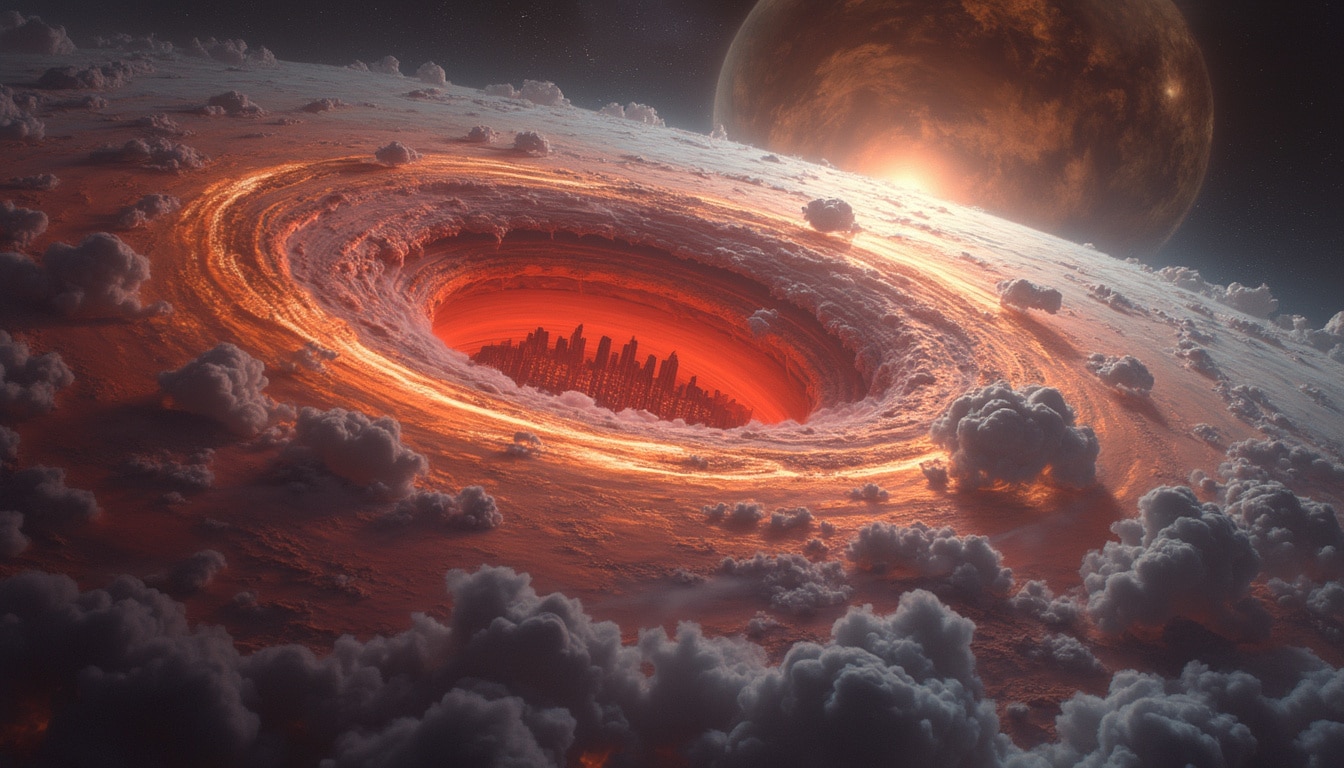The Great Red Spot, a magnificent and enigmatic feature of Jupiter, has captured the imagination of scientists and enthusiasts alike for centuries. This colossal storm, larger than Earth itself, has been raging for at least 150 years, showcasing the planet’s extreme weather phenomena. With the recent advancements in space exploration, particularly through NASA’s Juno spacecraft, our understanding of this storm has deepened significantly. Discoveries about its structure, dynamics, and perhaps even its future have emerged, providing insights not just into Jupiter but also into gas giants beyond our solar system.
The Juno mission has offered unprecedented close-up views of Jupiter and its swirling atmosphere. As Juno orbits the giant planet, it continuously sends back stunning images and data, revealing details that had previously eluded astronomers. This evolving story of the Great Red Spot invites us to dive deeper into the mysteries of this iconic storm, exploring its history, science, and the latest findings.
The Formation and Evolution of the Great Red Spot
The Great Red Spot has been observed for over three centuries, with its earliest recorded sighting in the 1660s. Since its inception, this swirling mass of clouds has undergone remarkable changes in size, shape, and color. Originally noted for its reddish hue, the storm’s appearance can vary significantly based on atmospheric conditions and solar radiation. The variations in its intensity and clarity have prompted scientists to question not only its future stability but also its origins.
Historical Observations
The historical record of the Great Red Spot is a tapestry woven from the observations of astronomers across the centuries. Early sketches and descriptions provided by astronomers like Giovanni Cassini paved the way for our understanding, but it wasn’t until the 20th century that photographic evidence began to reveal the storm’s true nature. The first images captured by the Voyager spacecraft in 1979 unveiled details that sparked a wave of scientific inquiry.
These early photographs showed the Great Red Spot as a massive, oval-shaped storm with defined boundaries. As telescopic technology improved, clearer images emerged, allowing scientists to track changes in the storm’s characteristics. Each new observation enriched our understanding of this atmospheric marvel, marking a pivotal point in the exploration of gas giants.
The Role of Modern Technology
The launch of the Hubble Space Telescope revolutionized our observation capabilities, particularly regarding Jupiter. With its high-resolution imaging and spectroscopic abilities, Hubble provided stunning visuals of the Great Red Spot’s structure and dynamics. Scientists were able to analyze color variations, temperature fluctuations, and even the chemical composition of the storm’s atmosphere.
More recently, NASA’s Juno spacecraft has transformed our approach, flying closer to Jupiter than ever before. Juno’s unique elliptical orbit enables it to gather data from different altitudes, unraveling the complexities of the Great Red Spot and offering insights into its core and the depth of its vortices. The data obtained from Juno is paving the way for a new understanding of storm formation and behavior on gas giants.

The Dynamics of Jupiter’s Great Red Spot
Understanding the dynamics of the Great Red Spot requires delving into the meteorological principles that govern its existence. This colossal storm is essentially a high-pressure system, where warm air rises and cooler air descends, creating a perpetual cyclone effect. Winds within the storm can reach speeds exceeding 400 miles per hour, generating intense turbulence that contributes to its distinct appearance.
Wind Patterns and Their Impact
The intricate wind patterns of the Great Red Spot play a crucial role in its lifespan and behaviors. These patterns are not static; they fluctuate based on the surrounding atmospheric conditions on Jupiter. Changes in temperature, pressure, and the interaction with other storm systems can influence the flow of winds, resulting in a dynamic and evolving structure.
Interestingly, recent observations indicate that the Great Red Spot is not as stable as it appears. NASA’s Hubble Space Telescope has documented its oscillations in shape, akin to a wiggling gelatin dessert. This unexpected behavior suggests that the storm may be undergoing significant shifts, further deepening the mystery surrounding its longevity and evolution.
The Interior of the Storm
One of the most intriguing aspects of the Great Red Spot is its depth. Data from the Juno mission has indicated that the storm extends much deeper into Jupiter’s atmosphere than previously thought. While optical observations provide a glimpse of the storm’s surface, Juno’s microwave radiometer has enabled scientists to probe the layers beneath, revealing a complex structure of swirling gases and fluctuating temperatures.
This deeper understanding allows researchers to speculate about how storms might behave on exoplanets orbiting distant stars. Insights gained from the Great Red Spot may help us establish parallels in the atmospheric dynamics of gas giants elsewhere in the cosmos, enhancing our comprehension of planetary weather and storm systems.

Juno’s Mission: A Close Encounter with the Storm
Launched in 2011, the Juno spacecraft has been a groundbreaking mission dedicated to the exploration of Jupiter. It aims to unlock the secrets of the gas giant’s atmosphere, magnetosphere, and history. Juno’s unique flight path enables it to make close passes over the planet, providing scientists with unprecedented data and imagery.
Close Flybys and Photographic Revelations
During its flybys, Juno zooms within approximately 5,600 miles of Jupiter’s Great Red Spot, a feat previously unimaginable. This close encounter allows the spacecraft to capture vivid images of the storm’s intricate details. The data gathered during these brief moments is critically important for understanding how such a massive storm functions.
In a recent encounter, Juno’s cameras visually documented a swirling array of colors that highlighted the storm’s features. These images reveal not just the storm’s surface, but also clues about its chemical composition and energy dynamics. Enhanced processing techniques have transformed raw images into vibrant representations that showcase the beauty and complexity of the Great Red Spot.
Scientific Discoveries and Implications
The data collected by the Juno spacecraft has profound implications for our understanding of planetary atmospheres. By modeling the behaviors of the Great Red Spot, scientists are striving to capture the mechanisms that sustain such gigantic storms. This pursuit of knowledge may extend beyond Jupiter, enabling us to comprehend similar phenomena on exoplanets.
For instance, the findings from Juno are helping to illuminate the characteristics of exoplanetary atmospheres, contributing to the broader field of astrobiology and planetary sciences. As we learn more about the Great Red Spot, we can also gain insights into the complex interplay of atmospheric forces that shape the weather on other planets throughout the universe.
The Future of the Great Red Spot
The future of the Great Red Spot is a topic of great interest among scientists and astronomers. As Jupiter continues to spin and its atmosphere evolves, the fate of this massive storm hangs in the balance. Recent studies suggest that the storm is gradually shrinking, a phenomenon that has raised questions about its longevity and the forces that govern its behavior.
Current Trends and Observations
NASA’s Hubble Space Telescope and recent data from Juno are instrumental in tracking changes in the Great Red Spot. Observations indicate that the storm may be contracting in size, leading to concerns about its eventual disappearance. Scientists are monitoring its evolution closely, seeking to understand the factors that contribute to these changes.
The dynamics of the atmosphere, climate patterns, and interactions with other storm systems all play a role in shaping the future of the Great Red Spot. Understanding these influences will not only inform our knowledge of Jupiter but also raise questions about the climatic conditions on gas giants elsewhere.
Potential Implications for Gas Giants
The implications of the Great Red Spot’s evolution extend beyond Jupiter. On a broader scale, they may provide vital clues about the atmospheric dynamics of gas giants throughout the universe. As scientists continue to study this iconic storm, they are gaining insights that could revolutionize our understanding of other planets’ weather systems.
This ongoing research highlights the interconnected nature of planetary science, emphasizing the lessons we can learn from a close examination of our solar system’s largest storm. Each observation adds another piece to the puzzle, revealing both the fragility and resilience of these colossal atmospheric phenomena.

The Significance of Studying Jupiter’s Great Red Spot
The Great Red Spot serves as more than just a fascinating astronomical feature; it acts as a window into the dynamics of planetary atmospheres. By studying this massive storm, researchers are uncovering insights relevant to our understanding of weather patterns on Earth, exoplanets, and beyond.
Impacts on Earth Science
One major area of interest lies in the comparative studies of atmospheres. The mechanisms that govern weather on Jupiter can provide parallels to our own planet’s atmospheric processes. For instance, the Great Red Spot’s stability and pattern formations can help meteorologists refine models of hurricane development and movement.
Broader Astrophysical Insights
Beyond immediate applications, the Great Red Spot raises profound questions about the formation of gas giants themselves. Theories regarding the origins of such storms contribute to our understanding of planetary formation and evolution. With each groundbreaking discovery, the knowledge gained from studying Jupiter’s atmosphere can shape the scientific narrative concerning the fundamental nature of the universe.
Inspirational Aspects
The exploration of the Great Red Spot inspires not just scientists but also the public. Stunning images and data from Juno instill a sense of wonder and curiosity about our solar system and the cosmos as a whole. This sense of discovery underscores the importance of space exploration and research, fostering a desire to learn more about our universe.

Final Thoughts on the Great Red Spot
The ongoing exploration of Jupiter’s Great Red Spot symbolizes humanity’s quest for knowledge about the universe’s mysteries. As we follow the path of the Juno spacecraft and the revelations it brings, we find ourselves at the forefront of discovery in planetary science. Whether it be through accessing new technologies or collaborating within the scientific community, the understanding of the Great Red Spot continues to expand, revealing the infinite possibilities of atmospheric phenomena on gas giants.
As we look toward the future, the knowledge gained from this legendary storm will undoubtedly shape our understanding of Jupiter and its environment, and by extension, the atmospheric dynamics of distant worlds. The mysteries of the Great Red Spot remain dynamic and evolving, echoing the spirit of exploration that drives us to continue looking to the stars.




Leave a Reply